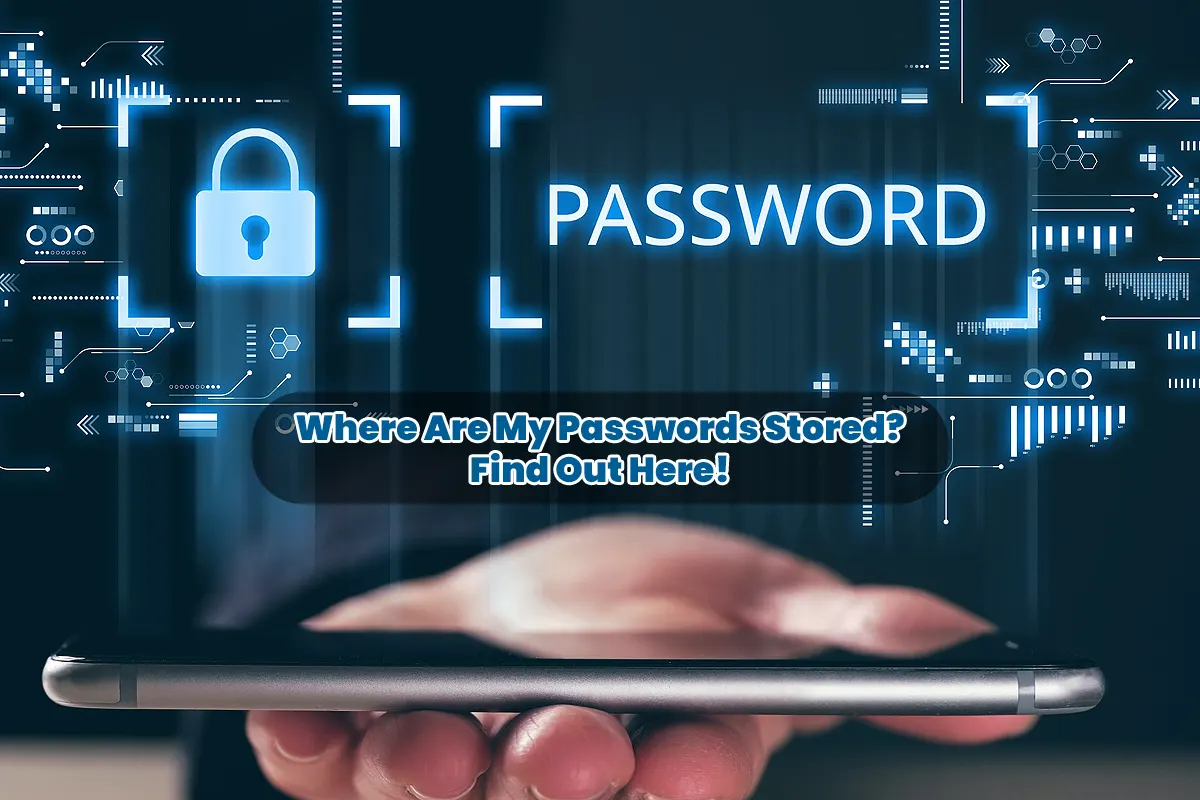Where Are My Passwords Stored – Have you ever tried logging in, but suddenly, your mind goes blank? So, you wonder, where are my passwords stored? Well, I’ve been in that situation, desperately clicking “Forgot Password” like it’s the end of the world. Therefore, I decided to figure out exactly where passwords are stored and how to manage them safely. So, let’s jump right in!
Where Are Passwords Stored on Your Devices?
Windows Password Storage
If you use Windows, then you probably don’t realize that a built-in Credential Manager stores saved passwords. So, checking it could be a lifesaver.
- Credential Manager: Stores login details for websites, apps, and networks, so accessing it makes sense.
- Web Browsers: Chrome, Edge, and Firefox have their own password managers, so using them could be helpful.
💡 Pro tip: Searching Credential Manager in the Windows search bar quickly reveals stored passwords, so trying it might help.
MacOS Password Storage
Since Apple simplifies security, it makes managing passwords easier. So, if you’re on a Mac, then your passwords are in Keychain Access.
- Keychain Access: Stores Wi-Fi, app, and website passwords, so accessing it helps retrieve forgotten credentials.
- Safari Password Manager: Syncs passwords across all Apple devices, so staying logged in becomes effortless.
💡 Pro tip: Using Spotlight (Cmd + Space → type “Keychain”) quickly locates stored passwords, so it saves time.
Linux Password Storage
Since Linux focuses on security, it offers built-in password storage. So, managing passwords becomes seamless.
- GNOME Keyring: Encrypts and stores passwords for apps and websites, so using it ensures safety.
- KWallet (KDE Wallet Manager): Keeps login credentials secure, so KDE users benefit from added protection.
Mobile Devices (iOS & Android)
Since phones store sensitive data, they also manage passwords. So, knowing where they go becomes crucial.
- iOS (iPhone & iPad): Uses iCloud Keychain to sync passwords, so Apple users stay organized.
- Android: Stores passwords in Google Password Manager, so accessing them through a Google account helps.
💡 Pro tip: Navigating Settings → Google → Manage Your Google Account → Security → Password Manager reveals stored passwords, so finding them becomes easy.
Where Are Passwords Stored in Web Browsers?
Google Chrome Password Manager
- Syncs passwords across devices, so logging in becomes seamless.
- Accessible via
chrome://settings/passwords, so retrieving saved passwords is simple.
Firefox Lockwise
- Mozilla’s built-in password manager encrypts data, so security remains strong.
- Accessing it through
about:loginsin the browser makes password management effortless.
Microsoft Edge Password Manager
- Syncs passwords through a Microsoft account, so users stay connected across devices.
- Autofill feature enhances convenience, so frequent logins become easier.
Apple Safari & iCloud Keychain
- Stores and syncs passwords across Apple devices, so security stays intact.
- Uses end-to-end encryption, so stored passwords remain safe.
💡 Pro tip: Enabling syncing across multiple browsers ensures password availability, so switching between devices remains smooth.
Third-Party Password Managers: Are They Worth It?
Since I once stored passwords in my notes app (bad idea!), I soon realized a password manager was essential. So, using one changed my life!
Popular Third-Party Password Managers
- LastPass: Offers cloud storage with encryption, so security stays high.
- 1Password: Designed for families and teams, so sharing passwords becomes easier.
- Bitwarden: Open-source and highly secure, so privacy stays protected.
- Dashlane: Provides feature-packed security, so password management becomes simple.
- NordPass: Developed by NordVPN, so encryption remains strong.
Cloud vs. Local Storage
- Cloud-based: Syncs across devices, so accessibility improves.
- Local storage: Keeps passwords offline, so security increases.
💡 Pro tip: Choosing a password manager with zero-knowledge encryption ensures privacy, so data remains safe.
Passwords in Cloud Accounts
Since cloud services store a lot of data, they also manage passwords. So, knowing where they go is crucial.
- Google Password Manager: Linked to a Google account, so password retrieval remains simple.
- iCloud Keychain: Apple’s cloud-based password vault, so syncing stays seamless.
- Microsoft Account: Syncs passwords across Windows devices, so access remains smooth.
💡 Pro tip: Enabling two-factor authentication (2FA) strengthens security, so unauthorized access remains unlikely.
The Dark Side: Risks of Storing Passwords
Since storing passwords comes with risks, awareness becomes necessary. So, staying cautious helps.
- Hacking & Data Breaches 😱 → So, using unique passwords prevents vulnerabilities.
- Phishing Attacks 🎣 → So, avoiding suspicious links keeps credentials safe.
- Weak & Reused Passwords 😬 → So, generating strong passwords ensures protection.
- Malware & Keyloggers 🦠 → So, updating security software reduces risks.
💡 Pro tip: Using a password manager to create strong, unique passwords minimizes security threats, so safety improves.
Best Practices for Managing Passwords
Since protecting passwords remains essential, following best practices makes sense. So, applying these steps helps.
- Use strong, unique passwords to prevent breaches, so security increases.
- Enable 2FA (Two-Factor Authentication) to add a security layer, so unauthorized access decreases.
- Update passwords regularly to stay safe, so risks reduce.
- Avoid storing passwords in notes or text files to maintain security, so vulnerabilities lessen.
- Use a password manager for easy access, so password management improves.
💡 Final tip: Sharing passwords weakens security, so keeping them private remains crucial. 🐶











